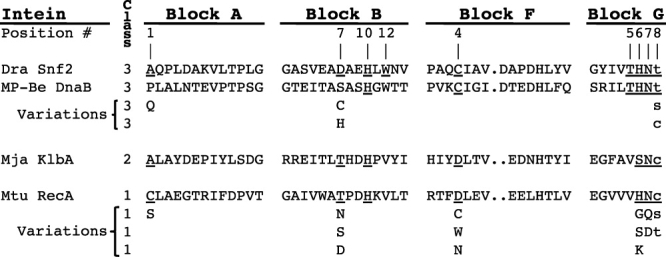Figure 1.

The four protein splicing domain motifs are depicted for the three classes of inteins. The position number in each Block for residues known to be important for catalysis is indicated. Conserved positions are populated by groups of residues that have similar properties except for the Block B His (B:10), which is almost invariant.1–5 An exemplary sequence is shown for each intein class. The most common residue found at selected positions is underlined and the common variations for these positions are shown. Note that no covariation amongst positions is implied in the rows listing the variations. To date, only 1 putative Class 3 intein (Bvi IcmO) has a Cys in the +1 position. Intein residues are in upper case using the single letter amino acid code and the +1 C-extein residue is in lower case. The periods represent a gap in some inteins due to a variable sized loop in Block F. Numbering of intein residues starts with 1 at the intein N-terminus and +1 at the C-extein N-terminus. Residues are referred to in the text using the Block letter and the Block position separated by a colon. An alternate Block nomenclature exists: Block A = N1, Block B = N3, Block F = C2, and Block G = C1.3 See InBase for a complete list of intein sequences and block sequences.1
